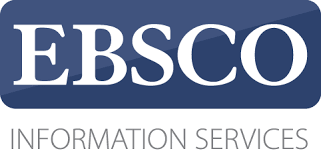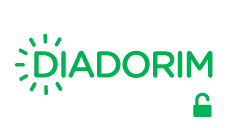Modelo SEM em neuromarketing como uma ferramenta de planejamento no ensino superior
DOI:
https://doi.org/10.35699/1983-3652.2022.40501Palavras-chave:
Neuromarketing, Marketing educacional, Planejamento estratégico, SEMResumo
O objetivo desta pesquisa é analisar a relação entre marketing, neuromarketing e planejamento estratégico a nível universitário. Este estudo é baseado em uma metodologia quantitativa com um paradigma interpretativo, através de um projeto de pesquisa não-experimental, transeccional, explicativo, descritivo e correlacional. Para esse fim, foi elaborada uma escala Likert para 616 estudantes e graduados das carreiras oferecidas no Campus 25 de Mayo da Universidad Columbia del Paraguay. A análise foi realizada através de uma correlação r Pearson, uma análise descritiva e uma análise exploratória de fatores (SEM), concluindo que é necessário desenvolver ações de marketing educacional com abordagens diferentes das atuais. Se a instituição educacional quer ser competitiva, tem que fortalecer ações para atrair estudantes potenciais através de técnicas que sejam competitivas na sociedade atual, e é aí que entra o neuromarketing. O modelo SEM nos permite concluir que existe uma relação entre universidade, marketing educacional, neuromarketing, educação superior de qualidade e planejamento estratégico, destacando que o planejamento estratégico é a chave para uma educação superior de qualidade, e que no campo educacional o marketing deve ser baseado no neuromarketing, embora ainda não seja um indicador de educação superior de qualidade.
Downloads
Referências
BARCO, E. A.; GARRO, L. L. Neuromarketing and advertising for emerging small businesses in the Gamarra commercial emporium. 2021. Unpublished graduate thesis – Universidad César Vallejo, Lima.
BRAIDOT, N. Neuromarketing. Barcelona: Grupo Planeta, 2009.
CAICEDO, V. Bibliometric analysis of neuromarketing research in advertising during 2009 and 2020 in the Scopus database. 2021. Unpublished graduate thesis – Universidad Autónoma de Occidente, Santiago de Cali.
CARMINES, E. G.; MCIVER, J. P. Analyzing Models with Unobserved Variables: Analysis of Covariance Structures. In: BOHRNSTEDT, G. W.; BORGATTA, E. F. (Eds.). Social Measurement: Current Issues. Beverly Hills: Sage Publications, Inc., 1981. p. 65–115.
DRUCKER, P. F. The practice of management. New York: Harper Buseness, 1954. ISBN 9780060878979.
GEORGE, D.; MALLERY, P. SPSS for Windows step by step: A simple guide and reference. (4th ed.) Boston, MA: Allyn & Bacon, 2003.
HERNÁNDEZ, A. Relation of the ICT with neuroeducation, inclusion, pluriculturality and environmental education through a Confirmatory Factorial Analysis study. Texto Livre: Linguagem e Tecnologia, v. 13, n. 3, p. 262–277, Oct. 2020. ISSN 1983-3652. DOI: 10.35699/1983-3652.2020.25739. Available from: https://periodicos.ufmg.br/index.php/textolivre/article/view/25739. Visited on: 25 Aug. 2022.
HOYOS BALLESTEROS, R. Marketing Plan. Design, implementation and contro. Bogotá: ECOE Ediciones, 2013.
HU, L.; BENTLER, P. M. Cutoff criteria for fit indexes in covariance structure analysis: Conventional criteria versus new alternatives. en. Structural Equation Modeling: A Multidisciplinary Journal, v. 6, n. 1, p. 1–55, Jan. 1999. ISSN 1070-5511, 1532-8007. DOI: 10.1080/10705519909540118. Available from: http://www.tandfonline.com/doi/abs/10.1080/10705519909540118. Visited on: 25 Aug. 2022.
JONES, D. G. B.; MONIESON, D. D. Historical research in marketing: Retrospect and prospect. en. Journal of the Academy of Marketing Science, v. 18, n. 4, p. 269–278, Sept. 1990. ISSN 0092-0703, 1552-7824. DOI: 10.1007/BF02723911. Available from: http://link.springer.com/10.1007/BF02723911. Visited on: 25 Aug. 2022.
JÖRESKOG, K. G. A general method for analysis of covariance structures. en. Biometrika, v. 57, n. 2, p. 239–251, 1970. ISSN 0006-3444, 1464-3510. DOI: 10.1093/biomet/57.2.239. Available from: https://academic.oup.com/biomet/article-lookup/doi/10.1093/biomet/57.2.239. Visited on: 25 Aug. 2022.
KAISER, H. F. An index of factorial simplicity. en. Psychometrika, n. 39, p. 31–36, 1974. ISSN 0033-3123, 1860-0980. DOI: 10.1007/BF02291575. Available from: http://link.springer.com/10.1007/BF02291575. Visited on: 25 Aug. 2022.
KAPLAN, D. Structural equation modeling: Foundations and extensions. Thousand Oaks, CA: Sage Publications, 2000.
KLINE, R. Principles and practice of structural equation modeling. 2n ed. New York: Guilford Press, 2005. (Methodology in the social sciences).
KOTLER, P.; KELLER, K. L. Marketing management. Fundamentals of Marketing. Madrid: Pearson, 2009.
LAMBIN, J. J. Strategic Marketing. Barcelona: Mcgraw Hill Editorial, 1992.
LAUTERBORN, B. New Marketing Litany; Four P’s Passe; C-Words Take Over. Advertising Age, v. 41, n. 26, 1990.
LLORENTE ALONSO, C. Marketing Educativo. Captación y fidelización de alumnos. Madrid: Madrid: ESIC Editorial, 2017, 2017.
LYU, D.; MAÑAS-VINIEGRA, L. Problemas éticos en la investigación con neuromarketing: una revisión de la literatura. Vivat Academia, p. 263–283, May 2021. ISSN 1575-2844. DOI: 10.15178/va.2021.154.e1351. Available from: https://www.vivatacademia.net/index.php/vivat/article/view/1351. Visited on: 25 Aug. 2022.
MALFITANO, O. et al. Neuromarketing. Cerebrando negocios y servicios. Buenos Aires: Granica, 2016.
MCCARTHY, J. Basic marketing: a managerial approach. 2nd ed. Illinois: R.D. Irwin, Homewood, 1964.
MENGUAL, S. The importance perceived by teachers and students on the inclusion of digital competence in higher education. 2011. Doctoral Thesis – University of Alicante.
SCHERMELLEH, K.; MOOSBRUGGER, H.; MULLER, H. . Evaluating the Fit of Structural Equation Models: Tests of Significance and Descriptive Goodness-of-Fit Measures. Methods of Psychological Research, v. 8, n. 2, p. 23–74, 2003.
SOLNAIS, C. et al. The contribution of neuroscience to consumer research: A conceptual framework and empirical review. en. Journal of Economic Psychology, v. 36, p. 68–81, June 2013. ISSN 01674870. DOI: 10.1016/j.joep.2013.02.011. Available from: https://linkinghub.elsevier.com/retrieve/pii/S0167487013000433. Visited on: 25 Aug. 2022.
STEIGER, James H. Understanding the limitations of global fit assessment in structural equation modeling. en. Personality and Individual Differences, v. 42, n. 5, p. 893–898, 2007. ISSN 01918869. DOI: 10.1016/j.paid.2006.09.017. Available from:
https://linkinghub.elsevier.com/retrieve/pii/S0191886906003825. Visited on: 25 Aug. 2022.
Downloads
Publicado
Edição
Seção
Licença
Copyright (c) 2022 Adriana Estefania Mónico Bordino

Este trabalho está licenciado sob uma licença Creative Commons Attribution 4.0 International License.
Este é um artigo em acesso aberto que permite o uso irrestrito, a distribuição e reprodução em qualquer meio desde que o artigo original seja devidamente citado.











